We kindly inform you that, as long as the subject affiliation of our 300.000+ articles is in progress, you might get unsufficient or no results on your third level or second level search. In this case, please broaden your search criteria.
Extremely complex and demanding process of every country access to European Union implies political will for conducting basic adjustments to what is called legal acquisition of EU or to Community/European Union “such as it is” (Acquis communautaire). That requires a clear vision, coordination and a programme of integration and legislature harmonization, with clear divisions of jobs and tasks of responsible institutions at all government levels in any accessing country or potential candidate. Bosnia and Herzegovina is unfortunately an example of inability to make a “common vision” about its own European future, and therefore inability to create functioning “coordination system” and Integration Programme, because of which Bosnia and Herzegovina was at the “blind track” in 2012 and 2013 as far Euro-(Atlantic) integrations are concerned. There is lack of will, knowledge and readiness for deep ambient reforms which would make B&H compatible to EU as far as constitutional-legal issues are concerned. And without changing the existing constitutional-legal framework it is not even possible to come closer to EU and not to mention to access to it. During the process of accessing to EU the final consequence is nothing else but taking over acquis and graded transfer of certain sovereign legislative and executive authorities to EU in accordance to principles about divided and transferred sovereignty, divided authorities and multi-level governing according to acquis. Equal rules are the same for everybody during taking over of “legal acquisition”, acquis has to be simply taken over during the process of accessing to EU. Conditions and deadlines of taking over are only negotiated, while Bosnia and Herzegovina as the state, which is the only partner to EU in international-legal terms, is responsible for consistent implementation of acquis. That takes into consideration both consciousness and responsibility for the own future at all levels, as well as capability of the public administration for the process of adjustment, negotiation, and access to EU. Unfortunately, institutions of BH authorities are not and do not want to be conscious of these challenges.
More...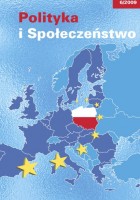
The Slovak Republic was born on 1 January 1993 resulting from a disintegration of the Czecho-Slovak Federation. Just like in the case of the other Eastern European countries, its foreign policy priority was defined in terms of the Republic’s integration with Euro-Atlantic structures. Compared to the other states in the region, the road of Slovakia to the European Union seems most exceptional. This exceptionality was caused by the political line pursued by Vladimír Mečiar’s cabinet in the period of 1994– 1998, which led to international isolation of Slovakia, made the country's bilateral relations with the neighbouring countries deteriorate, and let basic human rights be violated. Discrimination of the Roma and Hungarian minorities, using secret police forces to fight opposition as well as an increase in nationalist feelings resulted in Slovakia’s drop-out of the first group of CEE countries to apply for the EU membership. Slovakia’s relations with Hungry were particularly tense because of the Hungarian minority problem and the issue of Beneš’s decrees constituting a basis on which the property of many Hungarians had been confiscated after the war. The situation changed in 1998 when the so called „broad coalition” assumed power in Slovakia, led by Mikulaš Dzurinda. Dzurinda's cabinet's energetic efforts resulted in the Slovak Republic being invited back to the membership negotiations during the EU summit in Helsinki in 1999. In a short time the Slovaks became the leader of the negotiation process. Slovakia became a country attractive for many foreign investors, which contributed to its rapid economic growth. The systemic and economic transformation entailed, however, considerable costs exemplified by the rise of unemployment and much increased budget expenses to cover the social assistance needs. The EU accession referendum proved to be the Slovak population's manifestation in support of European integration. The fact that the referendum attendance only slightly exceeded the required minimum of 50% was, nonetheless, a case of concern. Representatives of practically all of the Slovak political parties spoke enthusiatically in favour of accession to the European Union. Some doubts were only voiced regarding dominant social views. Slovakia is a country of fairly small demographic potential. It is inhabited by barely 5,4 mln people. This is translated into an expected level of influence of Slovakia within the EU, which is insignificant. The Slovaks are represented by 1 commissioner, 14 deputies at the European Parliament, 7 ballots in the Council of the European Union, and some representatives in other Union’s institutions. In the circumstances, the Slovaks will be forced to seek allies to pursue their goals.
More...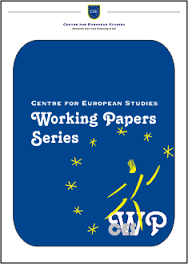
Once it was introduced as an instrument for deepening European integration, the legitimacy, opportunity and utility of European Semester were repeatedly questioned from the perspective of ist contribution to the institutionalization of European governance. Also, there is a strong and direct link between the further deepening of the European Union’s political and economic integration on the one hand, and the development of a culture of evaluating policies and programs on the other. Taking these aspects into account, the following questions arise: does the European Commission have, in its position as manager of the European Semester, a real capacity of evaluating all aspects regarding the deepening of European integration? Can the European Semester be a means for diffusing evaluation practice at the level of Member States? This is why, in this paper, we propose to give answers to these questions.
More...
An essay about the hopes and disappointments associated with the European aspirations of Ukraine. The author wonders to what extent Ukraine’s European choice is illusory and unattainable, and shows that the “velvet curtain” dividing Europe from Ukraine is increasingly impenetrable.
More...
The research explores the impact of Euroization on Kosovos businesss access to finance. It attempts at answering the questions as to what extent has the Euroization impactet the business development by enabling the adequate access to finance. The research finds that the Euro adaption has brought about different benefits.
More...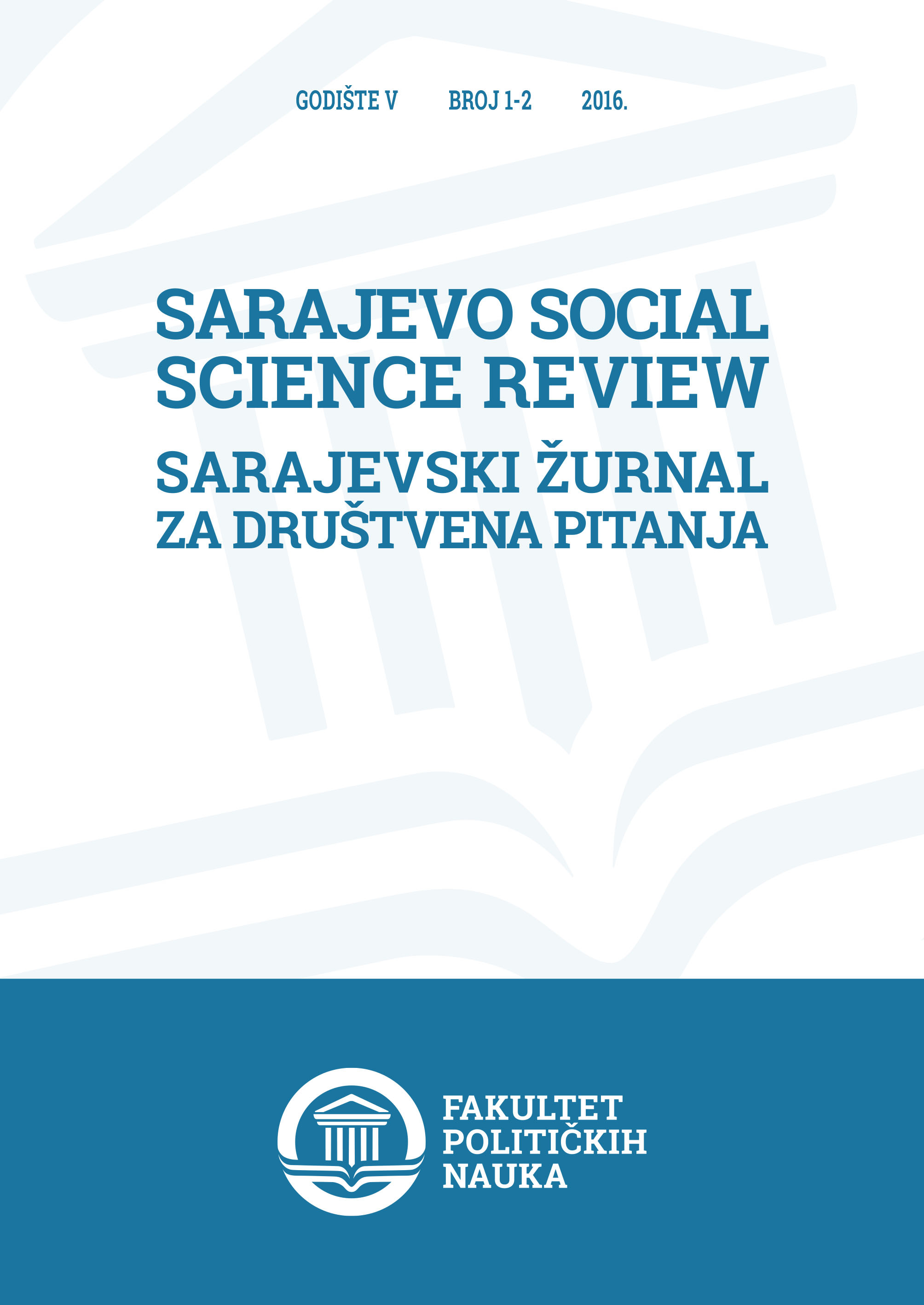
Enlargement lies at the very heart of the European Union integration process as a part of its fundamental principles. The article explores the institutional framework and barriers of EU membership and interrogates patterns and effects of democratization through Europeanization in its national, but also supranational and transnational dimension. The specific case study regards a set of countries called ‘Western Balkans’ in which the post-communist democratic transition and transformation assumed particularly conflictual and violent forms during the 1990s, with serious repercussions for the patterns of consolidation of the liberal democracy and its specific political culture throughout their societies. The analysis finally questions the ability of the EU institutions and actors to carry out such an accession process capable to induce deep political and social transformation of all societies involved and, at the same time, deal with its current financial and economic, political and ‘migrant’ crisis.
More...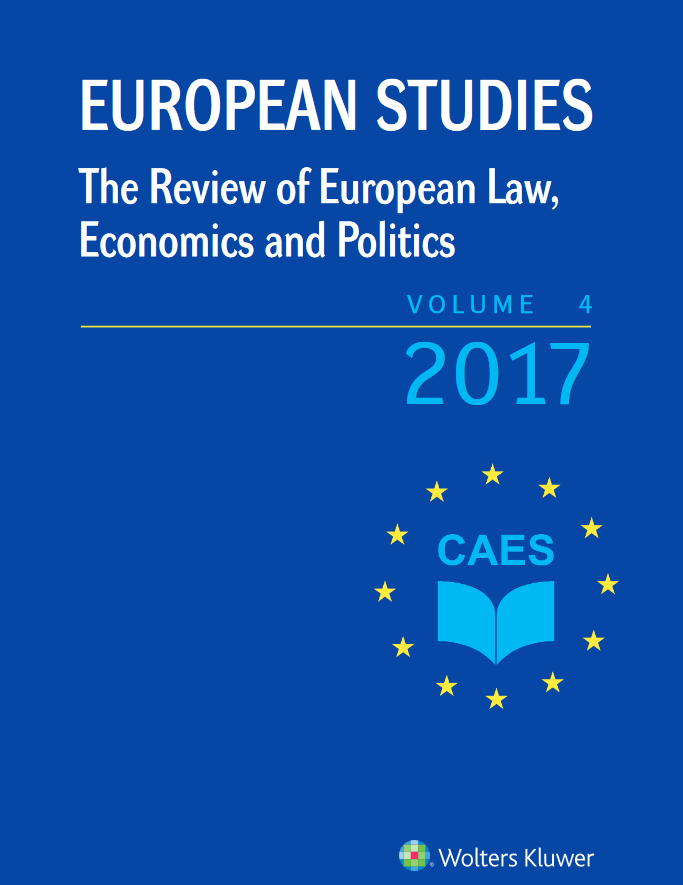
In many legal systems, documents confirming the rights of the heirs and other people benefiting from the inheritance are issued in order to confirm the rights to the inheritance acquired. The purpose of such documents is to present the rights under mortis causa legal succession to a third party, and legitimisation of the right currently vested in the entitled person, or solving of the possible doubts. Since the respective instruments documenting the rights to inheritance are only of territorial nature, with the entrance into force of the EU Succession Regulation, the European heirs were offered a new instrument of trans-border consequences – the European Certificate of Succession. This new Certificate was supposed to eliminate the previous imperfections in the system of documenting succession rights. After nearly two years of applying the new legal act it may be assumed that the new provisions have not dispelled the doubts.
More...
This article describes the use of instrument of commitments in the practice of application of the competition law of the European Union by the European Commission in energy sector. The article explores the reasons for increase in use of this instrument for resolving potential distortions of competition in energy sector, but also in other key sectors of the EU economy, as well as possible pros and cons of this approach. The text offers complex overview of the EU competition law provisions and summaries of documents by the European Commission and the Court of Justice of the European Union related to the topic. The article also enumerates and summarises the cases in which the European Commission accepted the commitments in the energy sector of the EU.
More...
With the successful 2016 BREXIT campaign, populist citizen demands directed the U.K. as a nation State to reclaim its diminished sovereignty and under Article 50 negotiations, to leave the European Union. Yet the negotiated transition of the U.K. and its 2019–2021 transitioni period carries with it potential implications not only for the future of the U.K. as a nation State and its legitimate expression of sovereignty but also for the remainder of 27 States who will need to reintegrate their partnerships within the regional bloc after the U.K. exits. This commentary proposes a 21st century GeoNOMOS model for the continuum of State sovereignty that outlines a core function for the State, constructs a framework of liberty that respects diversity, cultural heritage, domestic institutions while it promotes a new set of organizing principles in a society of economic traders. The GeoNOMOS model as proposed here, outlines a broad application not only for the U.K. as it restructures its sovereign function apart from the EU but also for those 27 remaining EU partnership States that struggle with the rise of populism across the Continent that demand more fiscal accountability and a centralized migration program within the European Union as a regional institution. Creating this new context for the 21st century expression of legitimate State sovereignty would potentially allow the U.K. to develop new best practices for other States to emulate and to lead a global conversation on matters related to the changing role of the nation State. The model outlined here defines sovereignty in terms of a State’s two key functions: [1] first and foremost, how the State cares for its own people, protecting participatory democracy and individual liberty; and then, [2] how a State protects its domestic institutions as it successfully engages on an international level within the “international community of states” and within a marketplace guided by capitalist globalization.
More...
This chapter of the monograph examines the historical, current, and possible future political and economic consequences of the United Kingdom’s referendum result to leave the European Union. The article briefly examines the roots of the British involvement in the European project and identifies some of the ideological differences between the UK and continental Europe. The author will also discuss the current position on the UK EU negotiations and the progress they have been making (or as the case may be the lack of progress). This will culminate in an examination of the possible outcomes of Brexit for both the UK and the certain member states of the EU in economic and political terms.
More...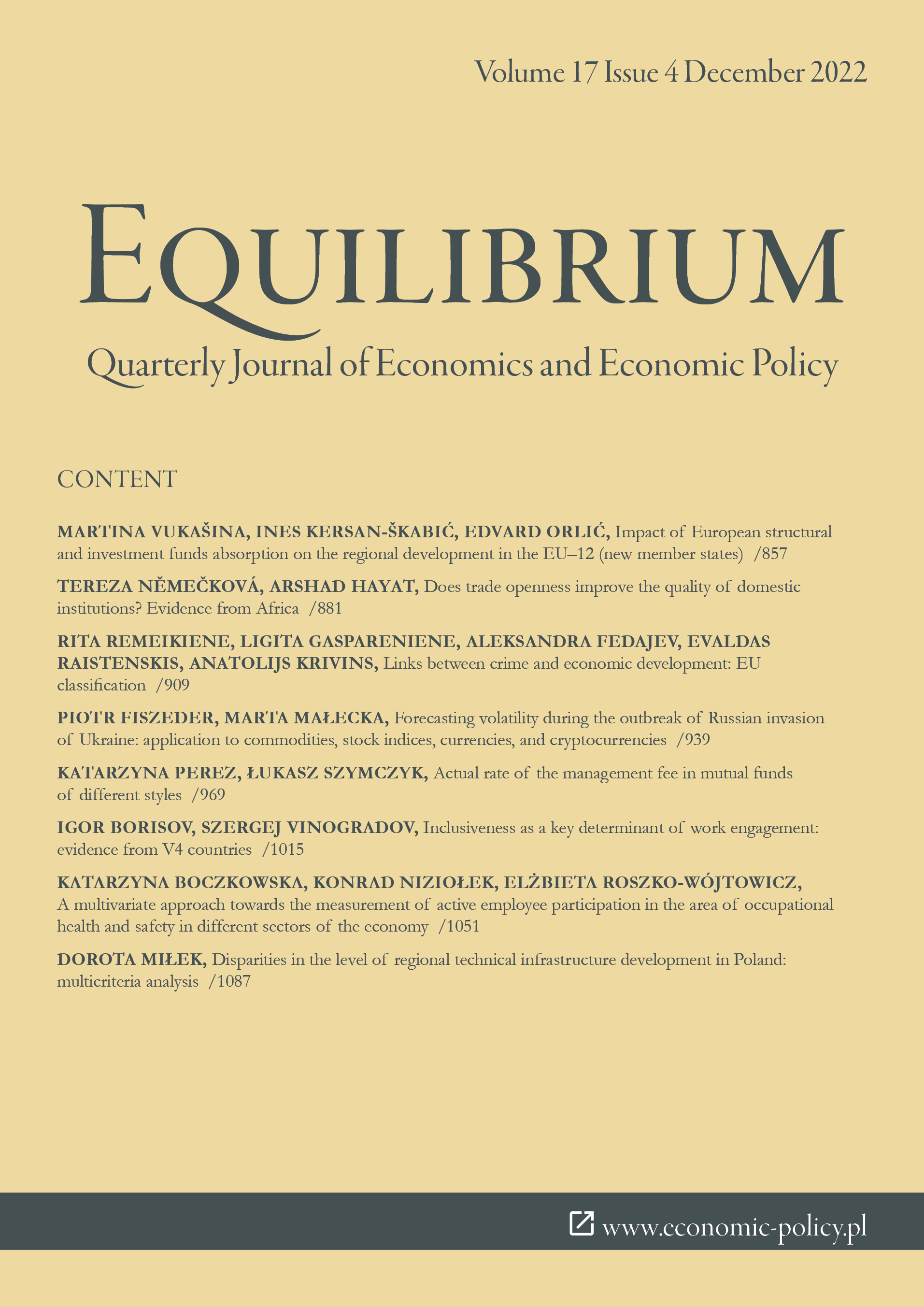
Research background: European Structural and Investment Funds (ESIF) as the main instruments of cohesion policy (CP) in the EU, provide a broad source of financing opportunities for the EU member states. The biggest amount in the CP budget is oriented to convergence NUTS 2 regions that have GDP p.c. below 75% of the EU average. The new members of the EU (accessed in 2004 and 2007) had available 176.3 billion EUR in the period 2007?2013 and 217 billion EUR in the period 2014?2020. Even the absorption rate (in 2007?2013) of available ESIFs is high (above 90%), the real implications on their economies don?t come automatically and they represent the area for examination. Purpose of the article: The research aims to analyse the impact of ESIFs absorption in EU new member states in the period 2008?2016 on their GDP p.c. Methods: As the sample has time and cross-sectional dimension, the panel data in static and dynamic form is employed. The analysis covers the major part of the financial framework 2007?2013 and a part of financial perspective 2014?2020 (depending on the available data). Findings & value added: The results indicate that increase in ESIF p.c. for 1% will contribute to the GDP p.c. increase for 0.0053 to 0.0064 % (static model) and for 0.008% (dynamic model). Although the impact of ESIFs is significant and positive, it is quite (and unexpectedly) small, and consequently new EU member states should not rely too much on them as the source of economic progress. It is necessary that countries should focus on channeling funds into specific segments (sectors, policies) that will result in increased competitiveness of their economies. The contributions lie in creating GDP p.c. determination function; in including all new EU member states; in including more recent available data and by observing ESIFs as a part of growth model.
More...
Research background: The development policy currently promoted by the European Union is focused on the use of the territory?s internal resources. Among the factors affecting regional development, by building its potential, infrastructure, being a basic necessity for developing activity in a given area, is of significant importance. Hence, investment in infrastructure is critical to stimulating economic dynamism, as it is the basis for supporting a variety of measures aimed at economic growth.Purpose of the article: This paper aims to evaluate the level of development of technical infrastructure and changes taking place in this field in Polish voivodeships in 2008 and 2020.Methods: The study was carried out using the Hellwig development pattern method and a comparative analysis of the technical infrastructure of Polish regions. The above approach makes it possible to measure the diversity of the state and availability of infrastructure for the communities of the regions.Findings & value added: While implementing the study aim, particular attention was paid to the spatial differences in the level of development of the technical infrastructure of Polish voivodeships. The analysis enabled to distinguish groups of voivodeships with the highest, high, low, and very low level of technical infrastructure development. From a long-term perspective, the conducted research can be seen as a contribution to existing research and serve to further compare the impact of technical infrastructure on the economic development of countries. The strength of the study is the adequately long time span of the analysis (2008 ? the period of the financial crisis and 2020 ? the COVID 2019 pandemic), which provides a basis for the formation of the infrastructure in question. The added value of the article is also a regional perspective on the level of development of technical infrastructure using multidimensional methods of statistical analysis. The results of the study can be used to make decisions at the national level regarding the retrofitting of infrastructure in regions with a low level of infrastructure development. For the European Union's decision-makers they can be a source of knowledge of where to direct EU funds the purpose of which is the infrastructural development of regions.
More...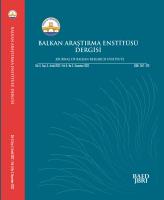
Today, Albania, which is a candidate country for the European Union (EU), is facing difficulties on the road to full membership. This situation has reasons related to Albania as well as the EU. This study aims to discuss whether the integration model of the Approach of Variable Geometric Europe can be an option for Albania, by examining those reasons. The method of the literature review was employed, and written sources were analysed in the study. There are some theoretical explanations concerning how European integration can be realized. When contributions of policy makers are examined, it is seen that flexible and differentiated integration models were suggested beside classical integration theories such as functionalism, intergovernmentalism, institutionalism, and constructivism. Academic studies, on the other hand, show that the Approach of Variable Geometric Europe constitutes a subclass of the concept of differentiated integration. This approach has importance in fast and easier integration, and in solving the problems of the countries which have serious challenges and are lagging behind the core and other member countries. Consequently, our study analysing Albania in this context, claims that the Approach of Variable Geometric Europe, as a suitable integration way, can contribute to Albania while it is struggling to overcome political and economic difficulties in its integration process.
More...
The article deals with the issues of cooperation between the European union and the council of Europe in the field of culture. it discusses basic joint programs to support culture as a driver of sustainable social and economic development; promoting culture and intercultural dialogue in peaceful relations between communities and strengthening cooperation in the field of cultural heritage.
More...
The aim of the article, consisting of two parts, is to present selected aspects concerning the assessment of the functioning of european works councils in the EU member states based on the results of own empirical research. it is about showing the strengths and weaknesses of these institutions of social dialogue and indicating recommendations to strengthen them, so that they can better implement the right to information and consultation. the first part presents general views on ewcs and their potential as assessed by the respondents. the second part, on the other hand, is devoted to issues that require improvement.
More...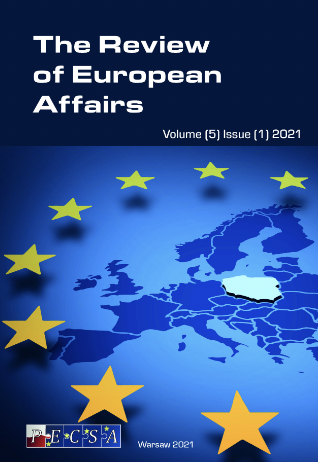
Przedstawiony artykuł wpisuje się w tematykę zmian społecznych i gospodarczych spowodowanych przez pandemię COVID-19. Celem artykułu jest przedstawienie szerokiego zakresu działań realizowanych przez Unię Europejską w celu walki z pandemią COVID-19 oraz jej konsekwencjami gospodarczo-społecznymi i ocena, jak mogą one wpłynąć na funkcjonowanie Unii Europejskiej w przyszłości. W artykule zaprezentowano podstawę prawną działań Unii Europejskiej w zakresie ochrony zdrowia oraz reakcję Unii Europejskiej na pandemię i jej konsekwencje. Autor dokonuje przeglądu finansowej i organizacyjnej odpowiedzi na kryzys spowodowany przez COVID-19, w szczególności dotyczącej udostępnienia szczepionek, wsparcia dla systemów opieki zdrowotnej oraz wsparcia dla gospodarek. Autor wnioskuje, iż Unia Europejska, pomimo początkowej opieszałości, ostatecznie prawidłowo zareagowała na wyzwania związane z COVID-19, tworząc liczne mechanizmy wsparcia dla gospodarek oraz dla obywateli. W szczególności sukcesami są: wspólne zakupy szczepionki i innych środków medycznych i ochronnych; bezpośrednie wsparcie dla narodowych systemów ochrony zdrowia; pośrednie i bezpośrednie wsparcie dla gospodarek. Nie do przecenienia jest też fakt, że zaistniały kryzys wykazał, iż oczekiwania społeczeństw państw członkowskich wykraczają znacznie poza przyznaną Unii legitymację traktatową w sprawach ochrony zdrowia oraz że stworzenie narzędzi pomocowych przyśpieszyło pierwszy krok w kierunku unii fiskalnej (pożyczki na rynkach finansowych / emisja obligacji). Artykuł odwołuje się do materiałów źródłowych instytucji europejskich i opracowań dotyczących skutków gospodarczych i społecznych pandemii. W artykule zostały wykorzystane metody analizy instytucjonalno-prawnej oraz analizy systemowej.
More...
Nowy, niejasny do końca wirus był szokiem dla świata dwudziestego pierwszego wieku. Jednak poza względami zdrowotnym i społecznym, spowodował także wstrząs w gospodarce. Łatwość, z jaką wydaje się przenosić, w połączeniu z rosnącą liczbą nowych przypadków oraz stosowaniem środków dystansowania społecznego, stworzyły atmosferę strachu i niepokoju. Izolacja, niezbędna dla powstrzymania rozprzestrzeniania się wirusa, wymaga zastosowania środków nadzwyczajnych ograniczających wolności obywatelskie, czego skutkiem jest wyhamowanie gospodarek krajów dotkniętych pandemią. Poszczególne kraje stosowały różne elementy polityki gospodarczej, by ograniczyć skalę recesji. Artykuł ma na celu zobrazowanie wpływu pandemii na gospodarki Unii Europejskiej, z uwzględnieniem czynników popytowych i podażowych.
More...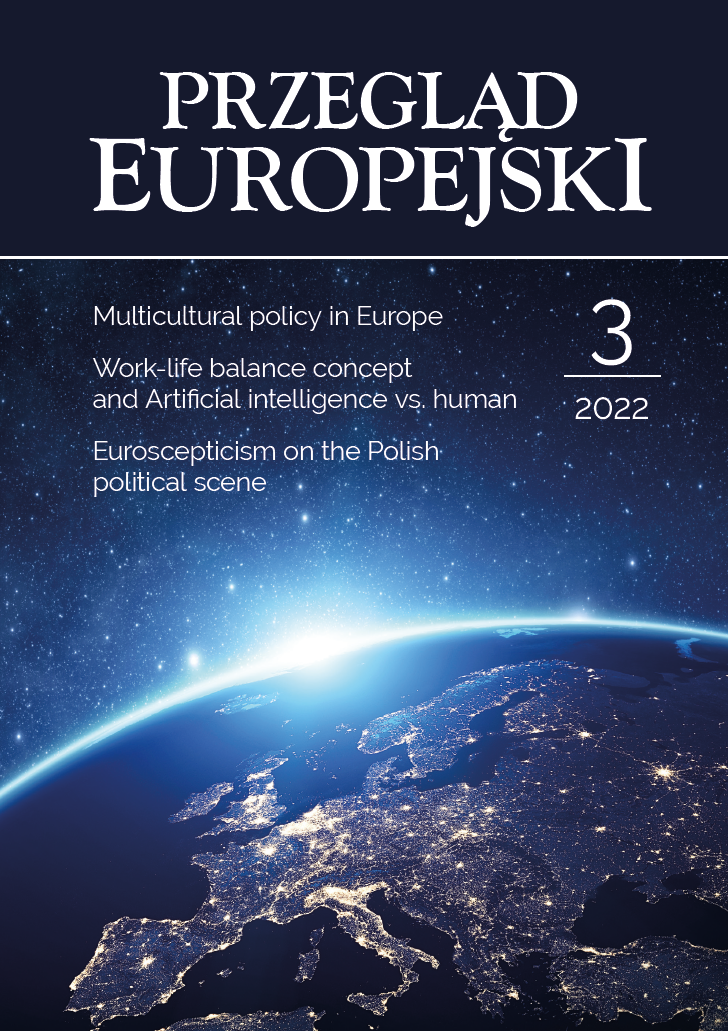
The aim of this article is to analyse the growing phenomenon of Euroscepticism on the political scene in Poland, taking into account the power of the ruling coalition headed by the party "Law and Justice". For this purpose, after a brief discussion on the theoretical framework of Euroscepticism, in order to find the reasons for the rise of this phenomenon in Poland in recent years, the current context of the government’s relationship with the European Union (EU) is analysed. Consequently, by analysing the political programmes of the party Law and Justice and statements of political actors associated with the main ruling party in Poland, the author verifies the upward trend in unfavourable attitudes towards the EU by current government, as well as consistently appearing considerations of leaving the EU (“Polexit”).
More...